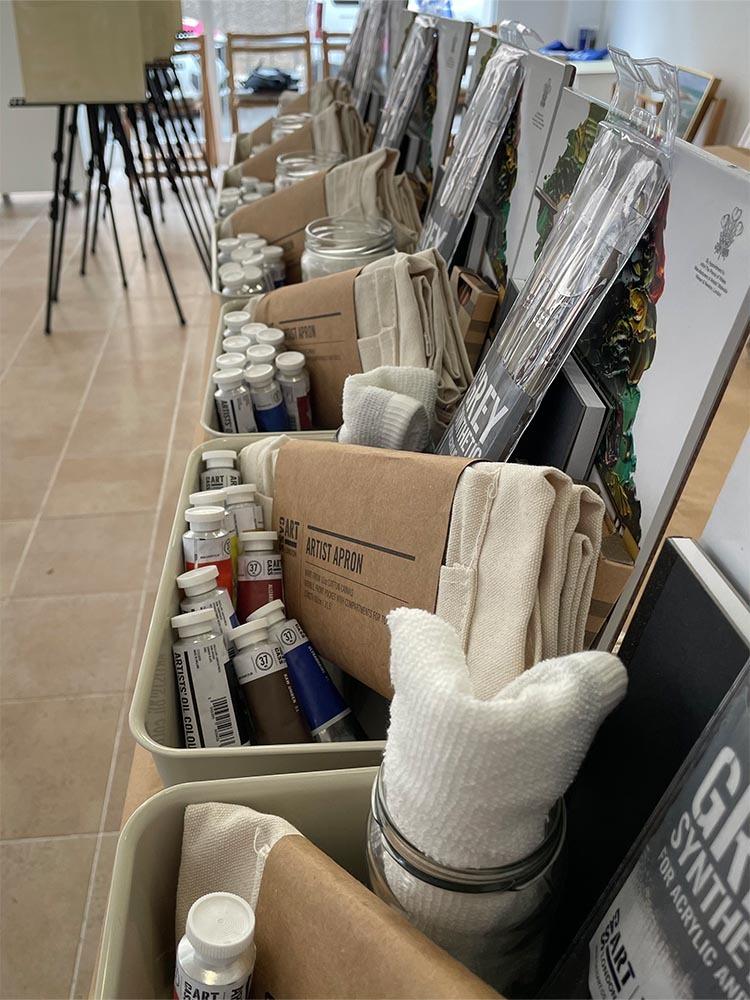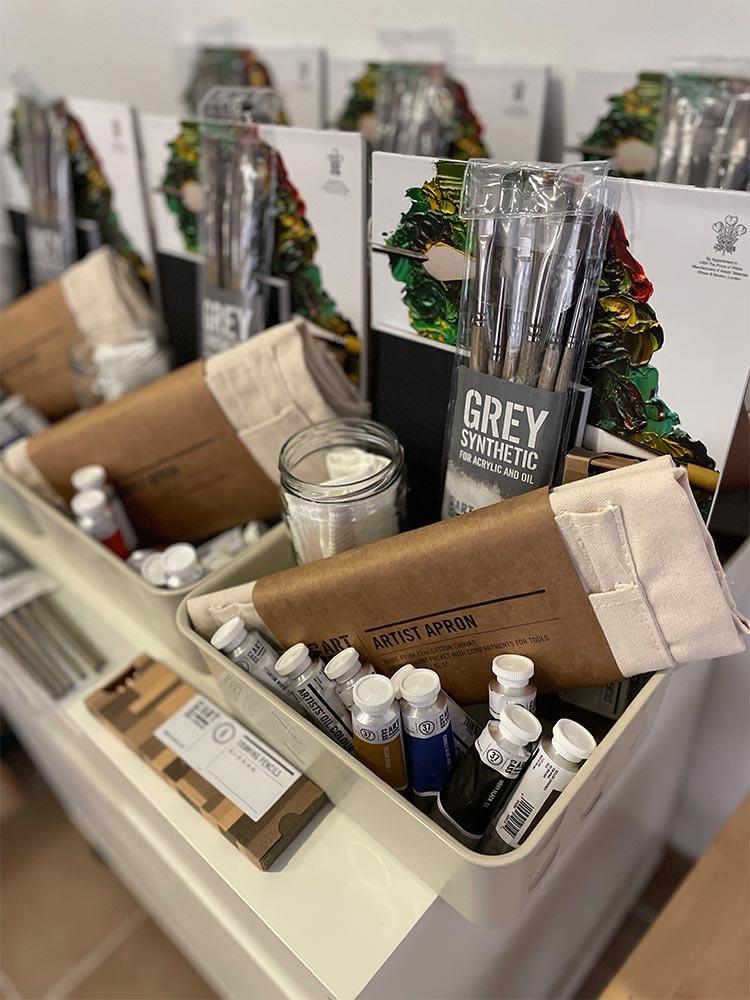The much anticipated line extension of Cass Art's Grey Synthetic Oil and Acrylic brushes is finally here and in this blog I'm going to talk you through all the new shapes and sizes and show you exactly how I use them in my painting practice.
The first thing to notice are the five key subdivisions of the collection making this a flagship range of quality synthetics designed to meet your every need. These are:
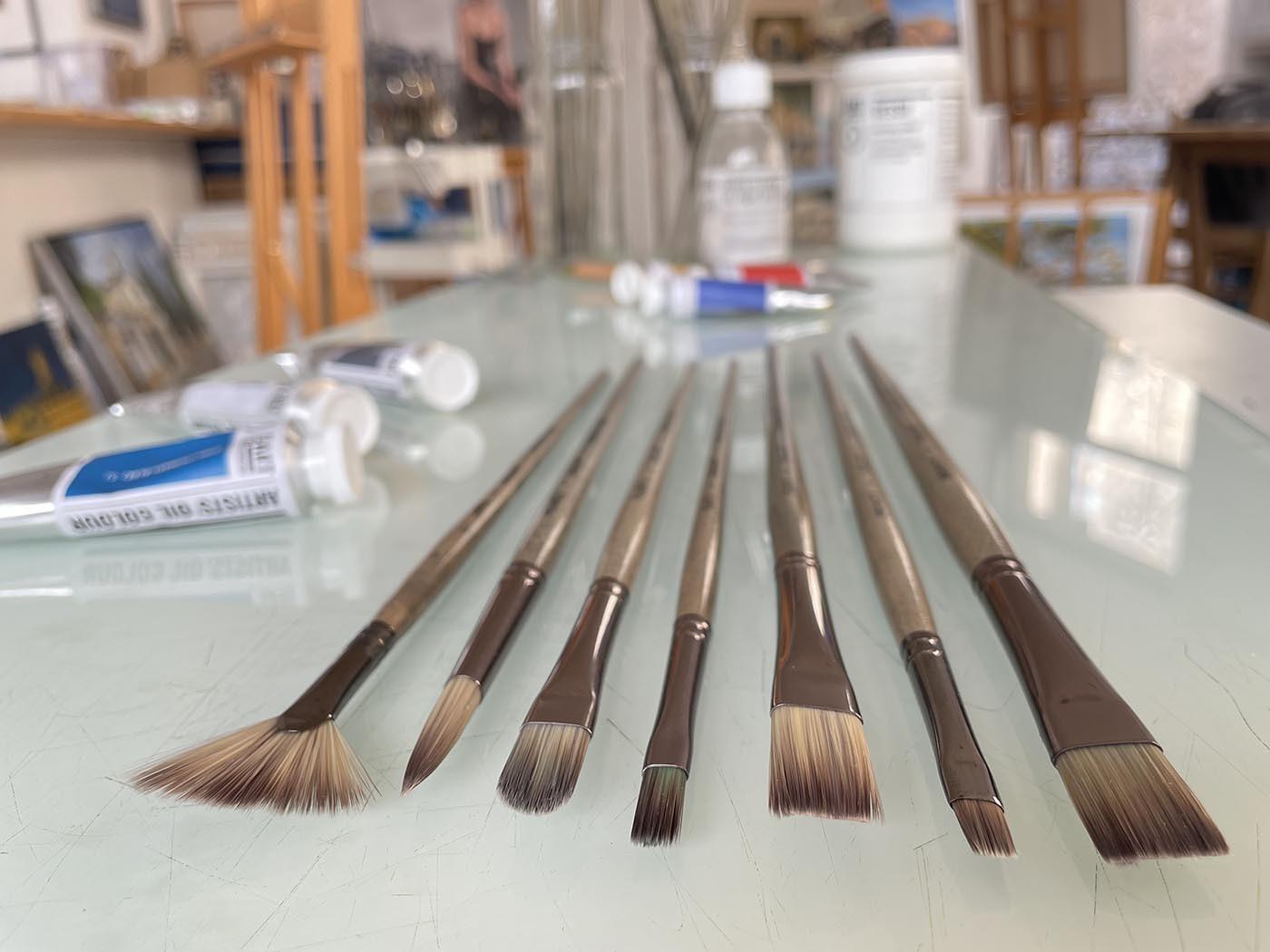
Brights are my personal favourite go-to brushes from the original Grey Synthetics range and they now come in four sizes; 2, 4, 8 and a mighty 10 - big enough to handle any situation where rapid blocking in or heavy impasto is the order of the day.
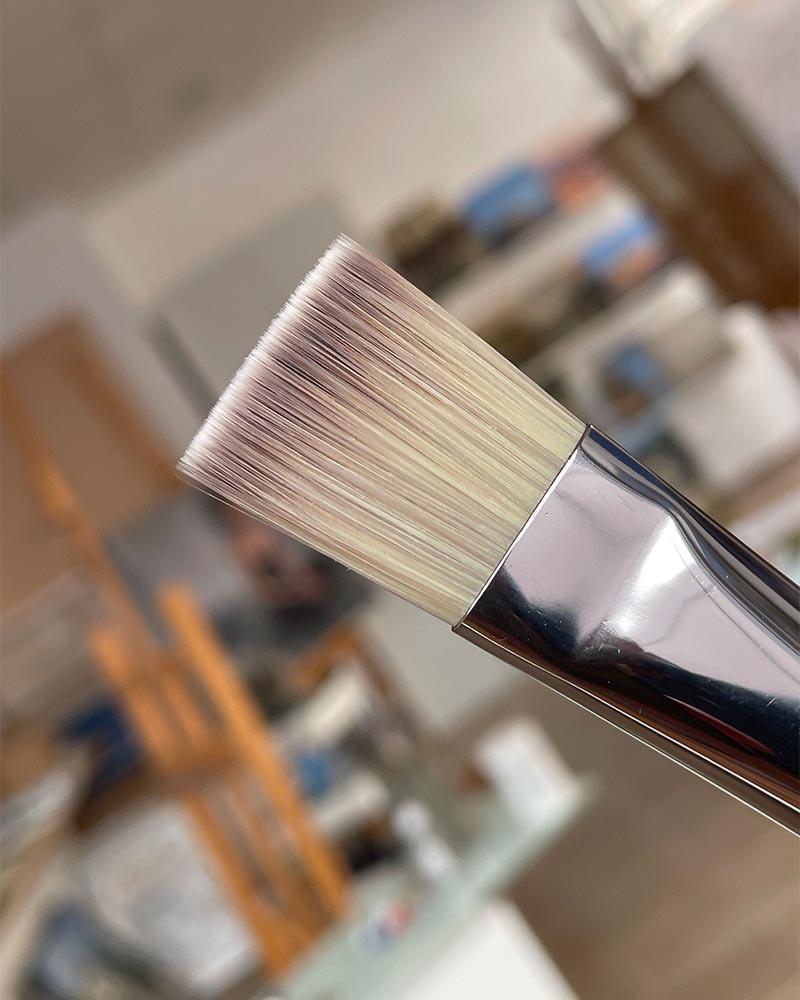
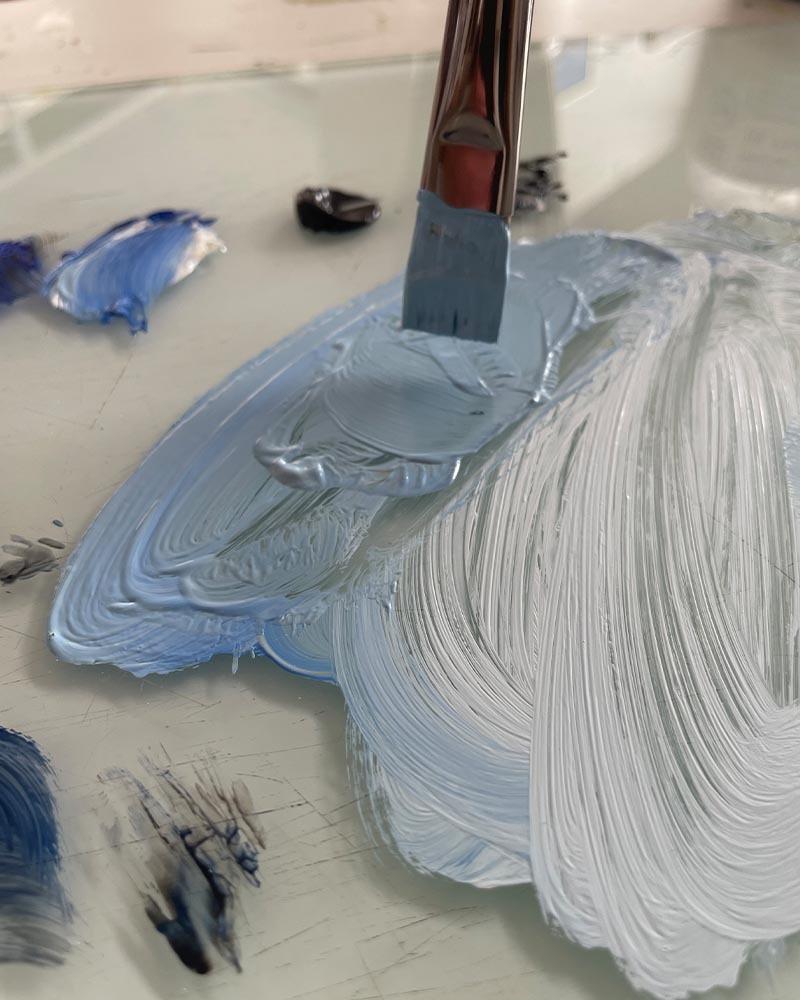
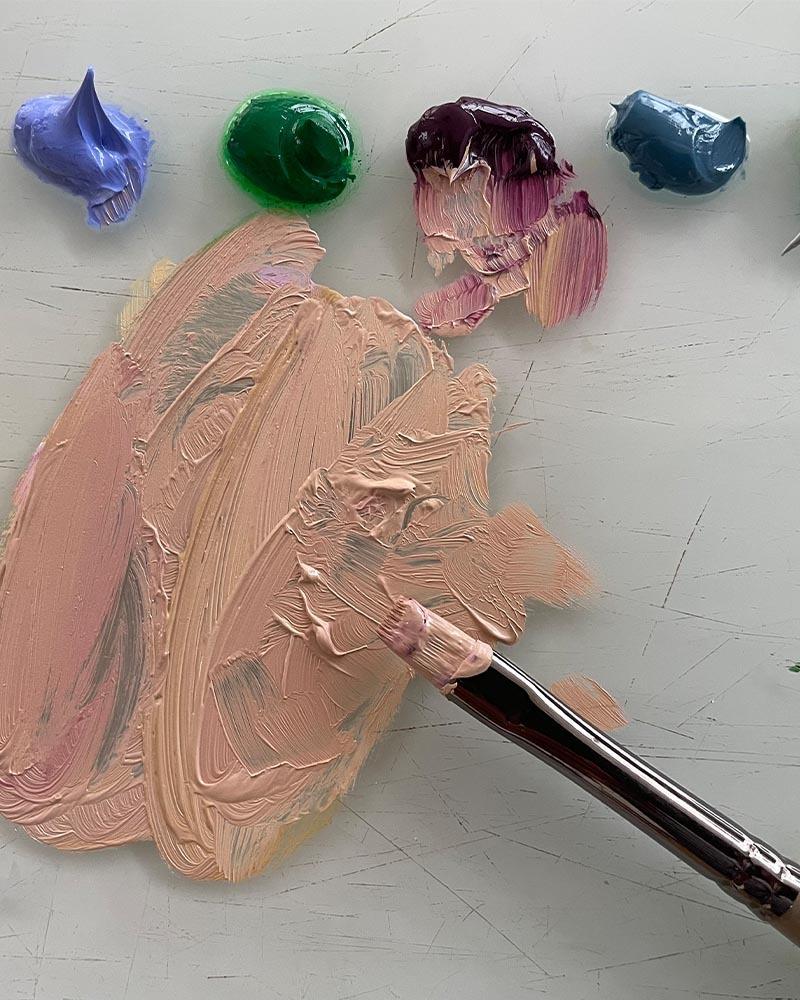
Brights have a couple of really significant features that make them extremely versatile…. they can create a fine line when held in one direction and also block in solid areas when rotated 90 degrees. Their clear, sharp edge means it’s possible to push paint right up to a transition point or a clearly defined line and the range of sizes means you can work from general to specific in a start to finish process within one painting. Shop Synthetic Bright brushes here.
Summary: These brights are going to be the powerhouse essential kit for oil and acrylic painters.
Take a Bright Brush and extend its length by 50 to 60% and you've got a Flat Brush - available now in sizes 2, 4, 6 and 8. The chisel edge is gone and your fine line detail control is slightly reduced but in terms of loading this brush can hold and deliver far more material and a Flat will give something that a Bright cannot.
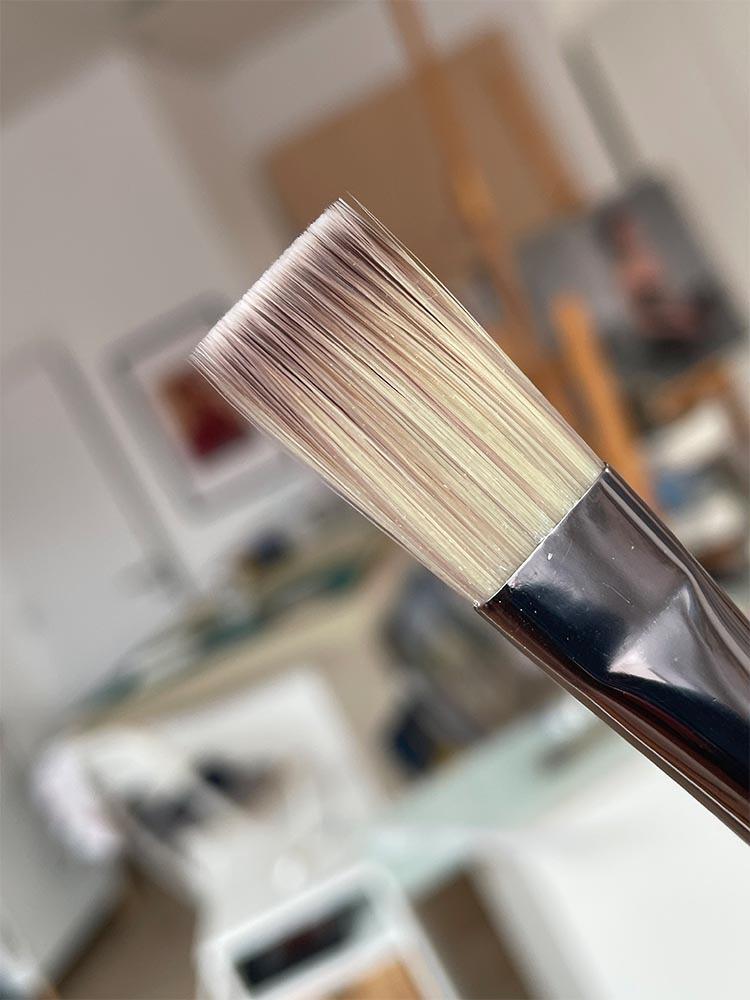
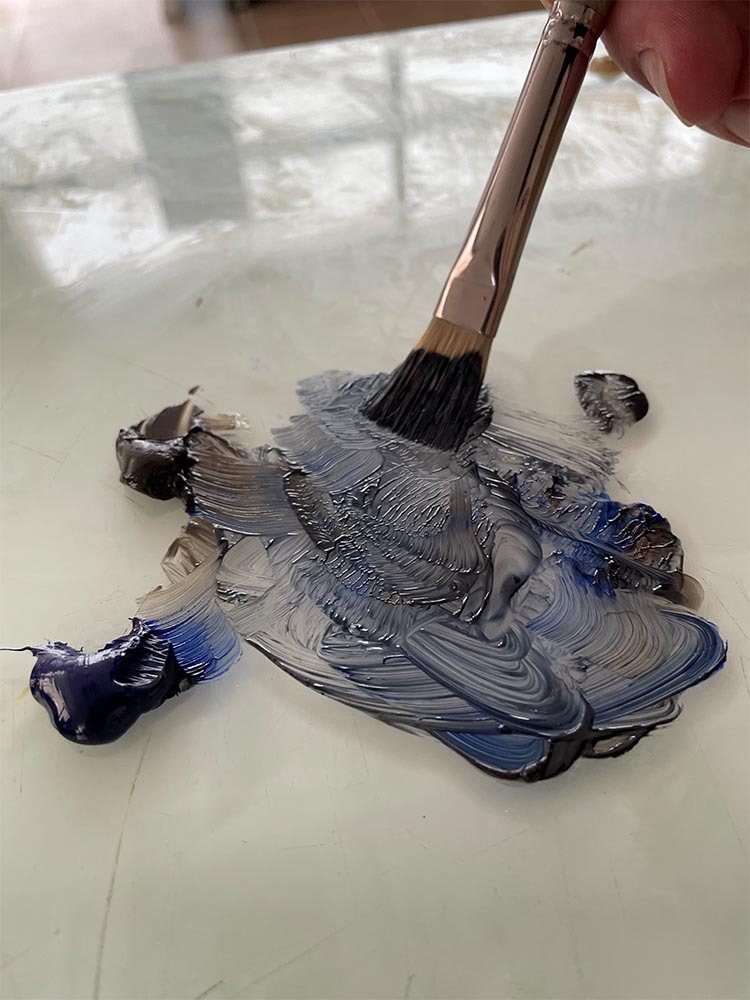
Not all painting is about sharp edges and precise lines and this is when I reach for the long fibre Flats. Whether I'm blocking in large areas of an underpainting or adding texture, for instance to a row of trees, I know I’ll get great coverage with the potential for plenty of texture.
Sometimes you want the ground of the canvas or gesso layer to peak through and this is when I mix my oils with generous quantities of liquin and apply it using large Flats in a fast motion. The long handles allow for holding the brush at a good distance from the canvas and help to create texture with lots of movement.
The smaller Flats can be used for adding some finishing touches and a little bit of detail and the great thing about them is the quantity of paint that they hold which allows for long strokes of uninterrupted application.
Summary: Flats should be an essential companion to your Brights in the studio - but are especially useful in a plein air kit where you are painting fast and trying to capture a specific moment.
Shop Synthetic Flat brushes here.
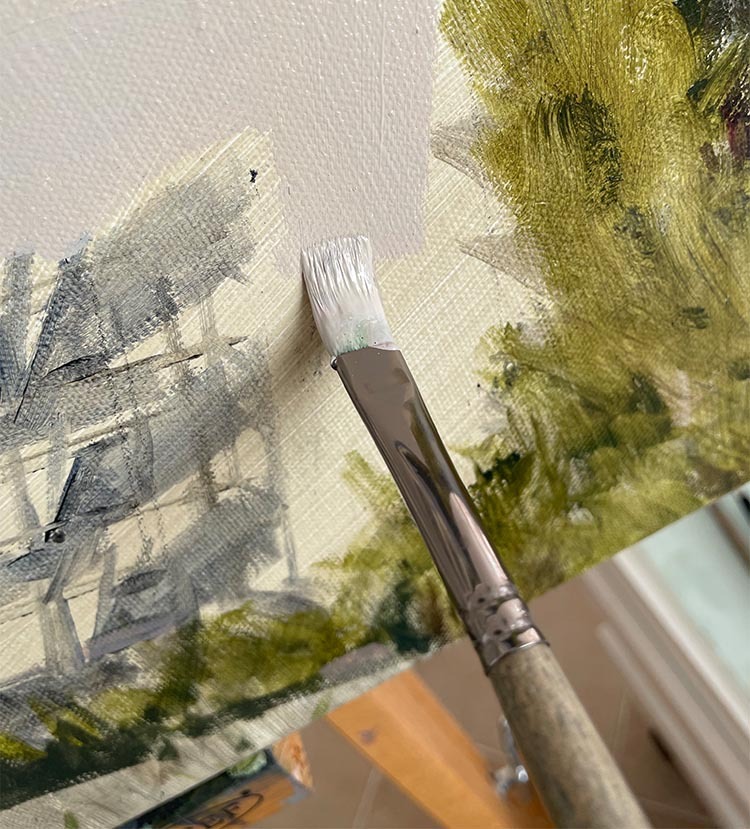
Filberts are rounded at the point so you’d think that a round shaped brush would only give you round shaped marks… which they can do, but Filberts have a lot more in the tank than just the opportunity to paint the petals of flowers or the soft rounded form of trees in a landscape.
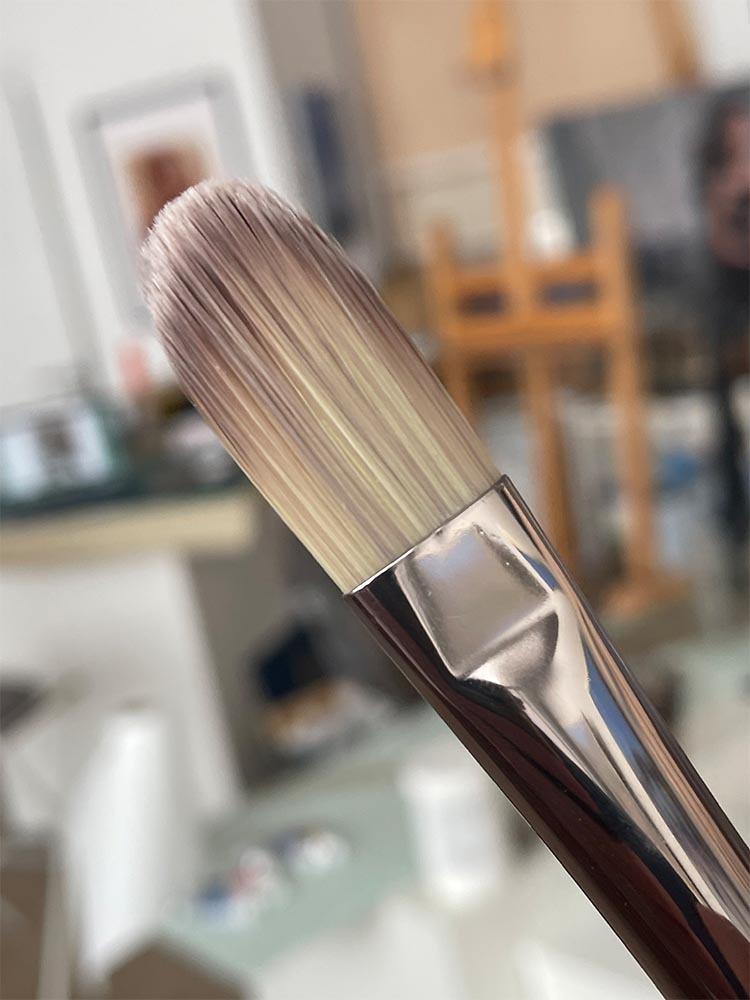
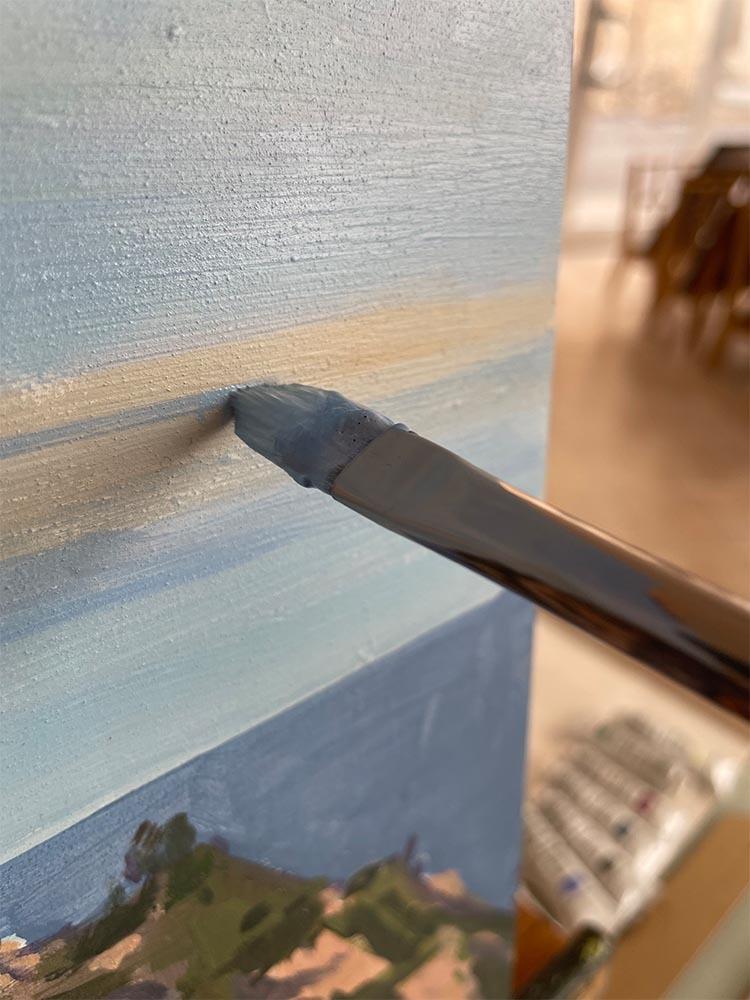
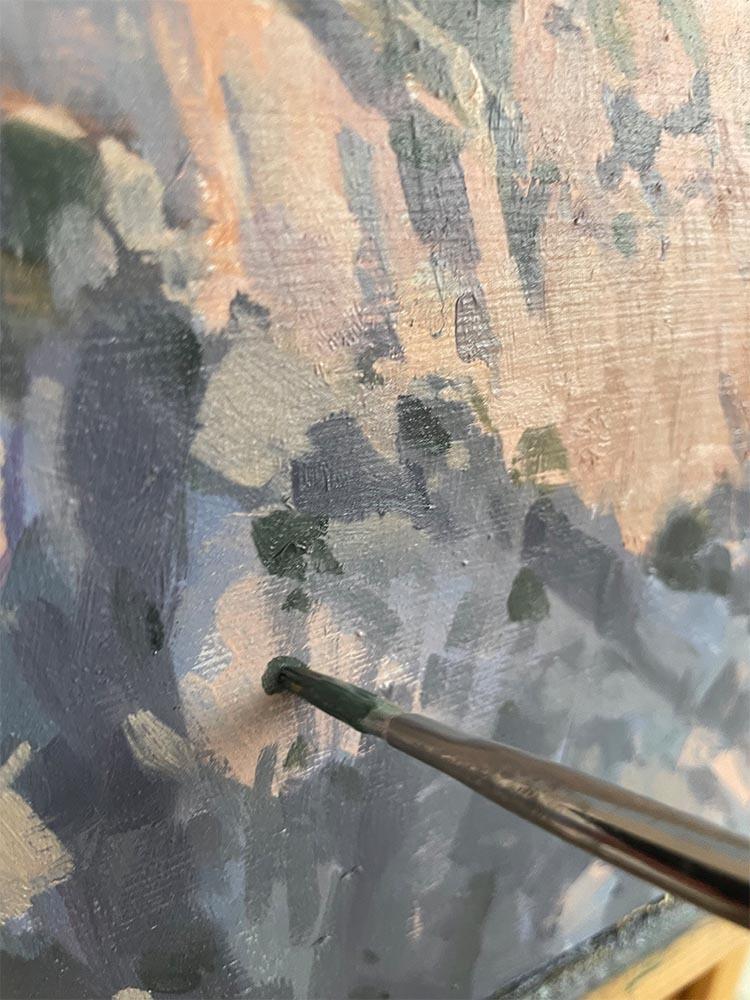
Available in sizes 2, 4, 6 and 8, a possible application of larger Filberts is in blocking in skin tones, where blending is key, or still lives where soft or lost edges are required. The mid and smaller sizes are perfect as refining tools in portraiture, landscape painting, leaves in trees or floral detail in still lives.
You’ll struggle to get a sharp, even line with these brushes, but that’s exactly the point. Drag them across the surface of a canvas turning the brush and changing the pressure as you go and you can create soft, enticing lines and have rhythm and flow.
Summary: These long fibre Filberts hold a lot of paint and offer the possibility of creating soft and subtle forms.
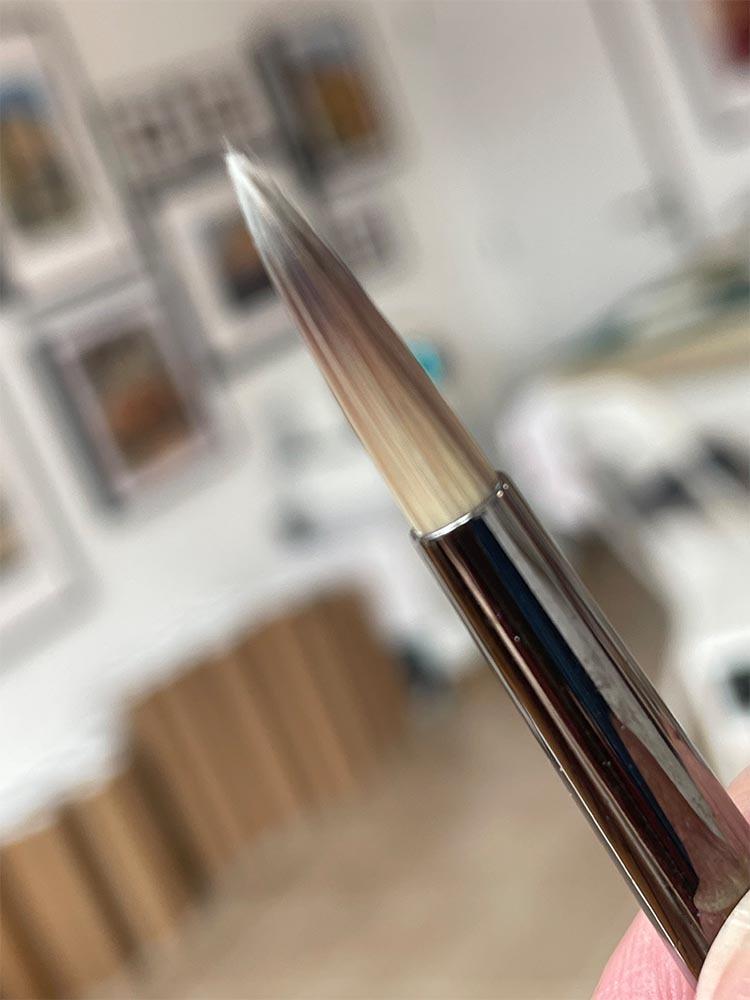
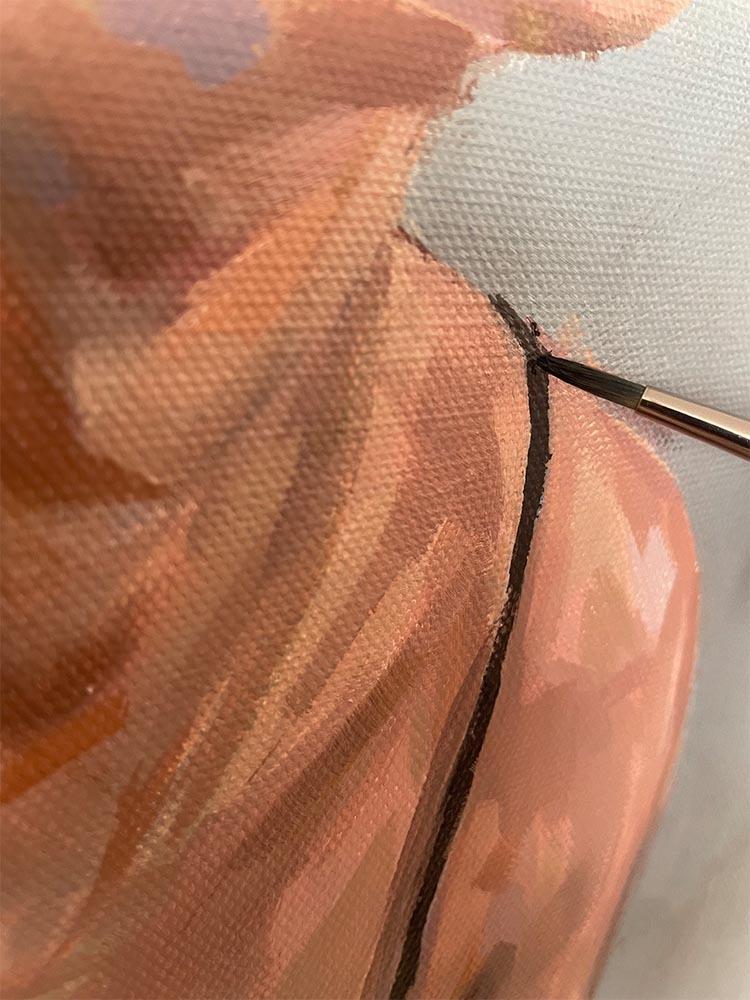
Whereas the small sizes are great for detail, the larger sizes are favoured by abstract painters where large organic forms are freely drawn on the canvas and amorphous areas of strong colour are required.
Summary: The smaller sizes are great for adding detail but remember to wash them carefully after use and shape them before they dry to retain the point.
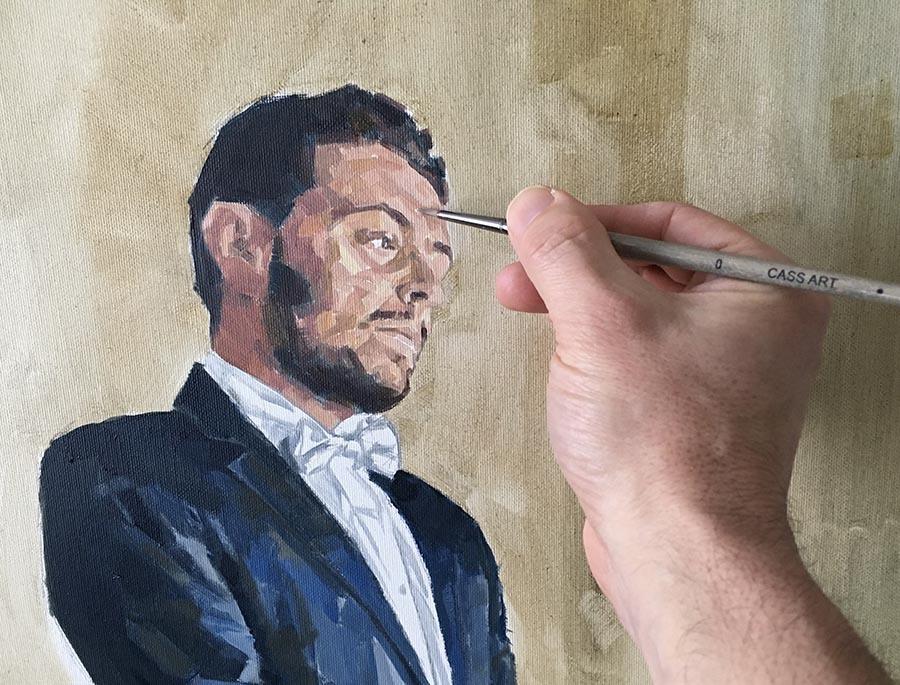
The Fans come in sizes 2 and 4 and are brushes traditionally used for blending oils directly on the canvas - creating subtle shifts in colours in skies and fabrics, etc. However, more recently the larger fans are being used in under paintings and in the right hands these brushes can create stunning loose impressions of figures and still lives. Explore the Synthetic Fan range here.
Summary: Fan number 2 is the perfect soft blending tool.
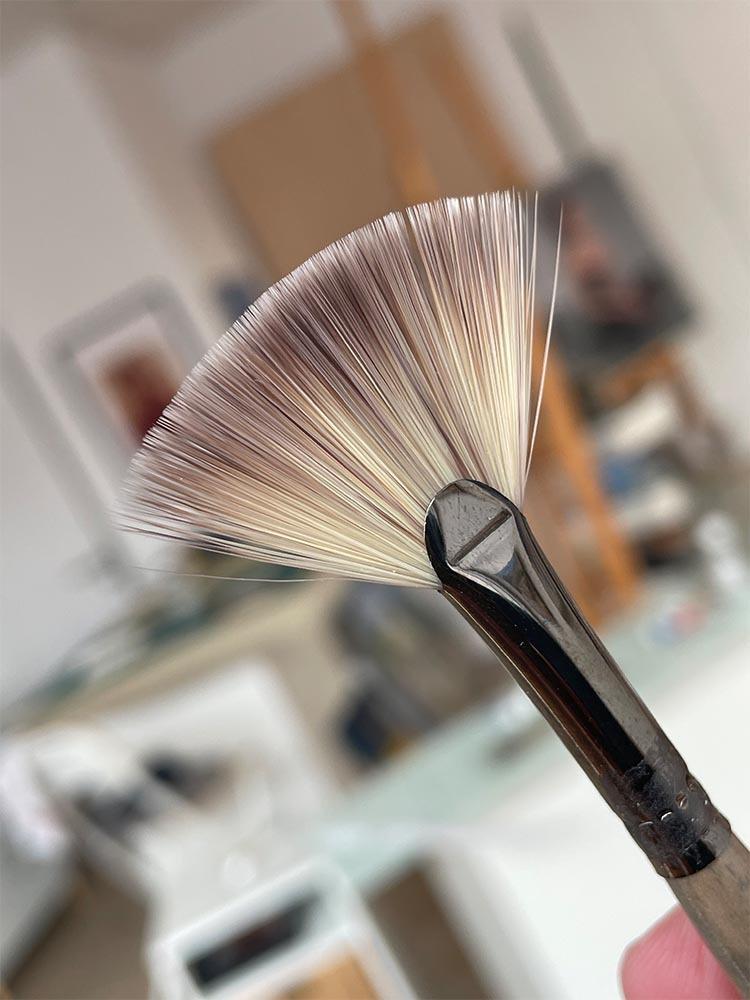
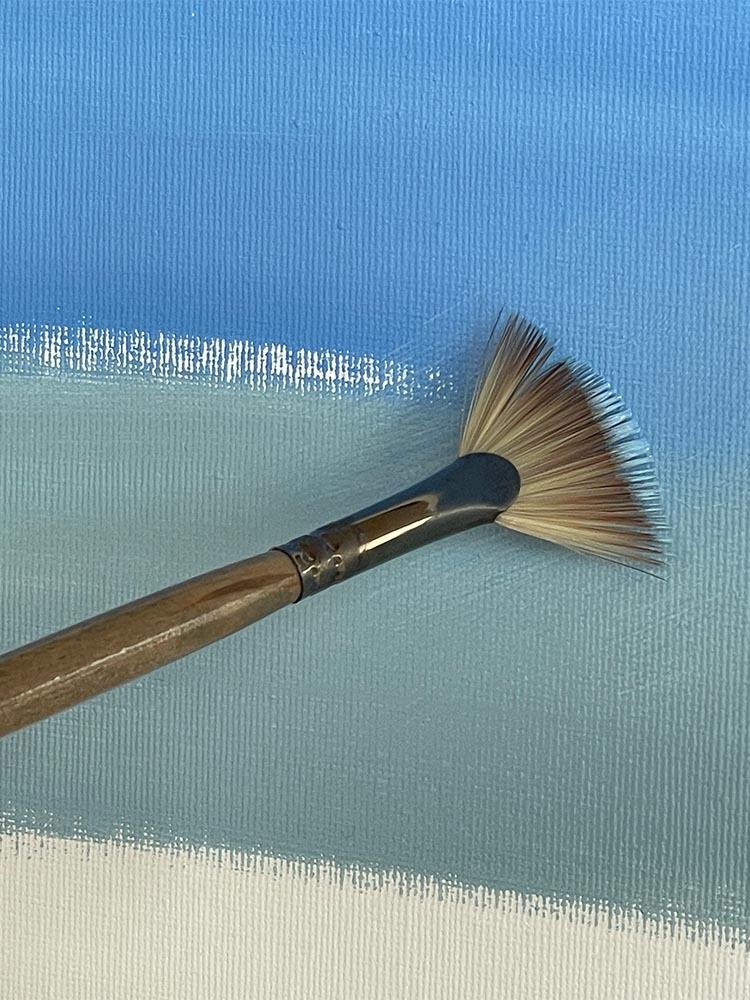
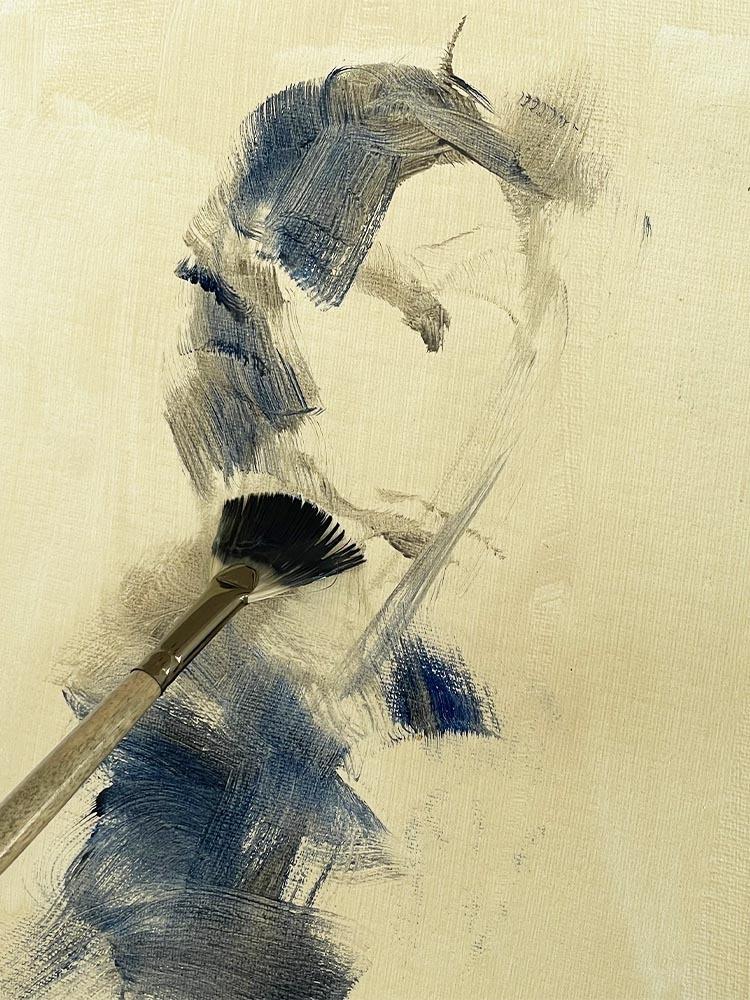
Your brushes will last longer and retain their original shape better if you follow these simple cleaning tips.
1. Wipe off excess oil paint with a cloth
2. Rinse briefly in Cass Art Brush Cleaner and Oil Paint Dilutant
3. Wipe again
4. Dip in water and clean using ‘The Masters’ Brush Cleaner
5. Rinse well
6. Wipe off excess water and shape before letting dry
When I’m teaching… I always tell my students ‘the marks you are able to be make are directly related to the brush you use’ - which is why I supply each student with brushes of my choosing so they can experience using the right tool for the job in hand.
Up until now, I’ve always given out Cass Art Grey Synthetic Brush sets - but now, with this line extension, I can pick and choose from a selection that has just about every brush you need to make wonderful oil paintings.
The Cass Art Grey Synthetics offer a no limits opportunity for creating your next masterpiece and I strongly recommend them to you.
Greg Mason is a member of the Royal Institute of Oil Painters and also Professional Oil Painting Ambassador for Cass Art.
